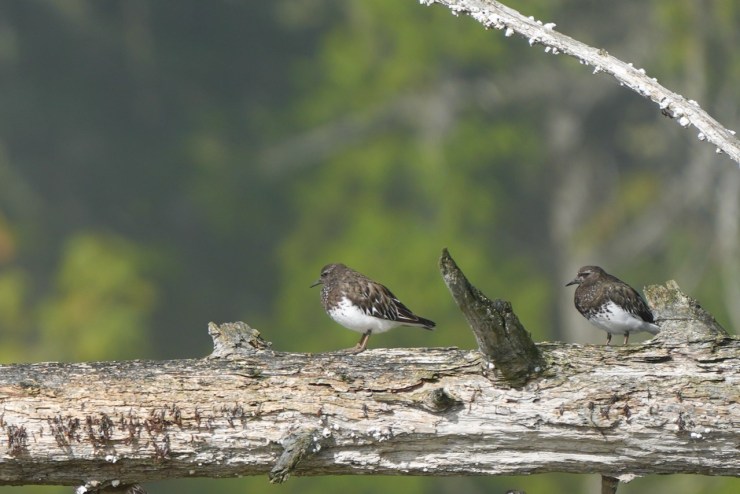Time is told, and now begins the season of southing in the watery parts of the Pacific Northwest.
Jupiter’s world divides into migrators and remainders and the crew wonders if some remaining in northern latitudes might like to join the recessional rather than weather the crepuscular twilight of boreal winter.

We are not alone in our sally south. Birds do it, whales do it, even fish with scales do it.
On our wayward way, Jupiter is absorbed by the Broughton archipelago where misty island Sirens compete for favor, opening their lagoons, coves and bays for boats.

Heading elsewhere, a fetching unnamed cove manifests itself, convincing Jupiter’s crew to swiftly pivot to enter this lonely inlet. The cove, it is learned, has three useless names: Mud Cove, Let-Her-Rip Cove, and No Name Cove.
We find ourselves in a beautiful small bay, protected by high islets and low rocks whose weed-mopped tops are seen only at the lowest tides.

Before the anchor bites five adjectival bird species are listed and logged: Belted Kingfishers, White-winged Scoters, Common Loon, Great Blue Heron and Red-necked Grebe.
In late afternoon it appears that the surface of one neritic islet is moving, sending a ceaseless high chittering across the waters. Binoculars disclose a vast community of small white-bellied birds, scurrying and flapping, squabbling and scratching the ground.
As the morning fog clears, the tender is launched. Cameras and a lens the length of a forearm are loaded. We drift close enough for each species to asses the other.
These are Black Turnstones, arenaria melanocephela, living up to their name and using their optimized beaks to flip over rocks, weed and shells in order to eat the tiny creatures found beneath.

Dapper birds, the color of wet rocks and sea foam, Turnstones breed in summer months in coastal arctic lowlands, then migrate south in sizable flocks, covering great distances. They winter along the seaboard from British Columbia to Mexico.
Like us, these birds are southing.
After twenty four hours by the sun’s height, nourished and rested, they wheel aloft in a variegated nebula of wings, beaks and bellies. The next morning we follow, now far behind them in their Turnstone lodestone quest, leaving no stone unturned.
We too seek temperate climes as the waning summer light, deep lows and high-strung blows pluck at the ragged edge of the Pacific Northwest.
Surfin’ Bird
The Trashmen ~ 1963
A-Well-a everybody’s heard about the bird!
Bird bird bird, b-bird’s the word.
A-Well-a bird bird bird, bird is the word.
A-Well-a bird bird bird, well-a bird is the word.
A-Well-a bird bird bird, b-bird’s the word.
A-Well-a bird bird bird, well-a bird is the word.
A-Well-a bird, bird, b-bird’s the word.
A-Well-a bird bird bird, b-bird’s the word.
A-Well-a bird bird bird, well-a bird is the word.
A-Well-a bird, bird, b-bird’s the word.
A-Well-a don’t you know, about the bird?
Well, everybody knows that the bird is the word!
A-Well-a bird, bird, b-bird’s the bird.
A-Well-a










Beautiful descriptions of the Turnstones. I love the photos of them in flight. I am happy you’re heading south which means I will be seeing you both before too long. I made the mistake of playing Sufin’ Bird. I remember the song and now it’s stuck in my head. Haha.
That’s why we didn’t provide a link. Afraid of no forgiveness. It’s an ear worm for sure. See you soonish!